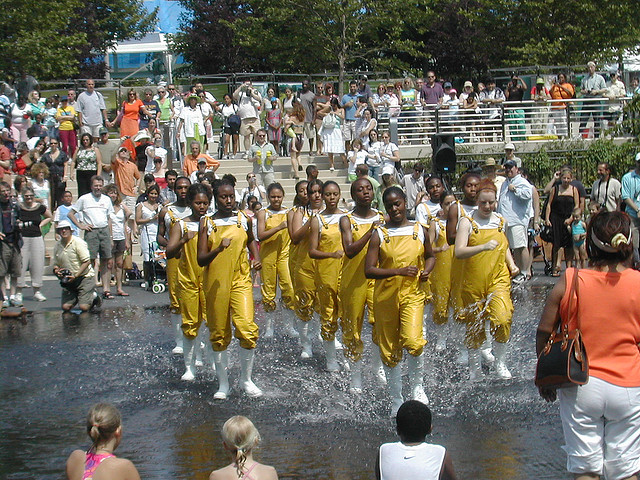Bringing art back to the community
By Alison Cuddy

Bringing art back to the community
By Alison Cuddy
This summer WBEZ is embarking on a series of stories and conversations centered around race. Race: Out Loud aims to ask honest, in-depth questions about how we talk and see race in our nation and in Chicago.
There’s been lots of emphasis lately on building up Chicago’s cultural profile. At the city, the push is to move arts and culture away from the lakefront and out into the neighborhoods. Some of the ideas, as befits Chicago, are big and bold. Mayor Emanuel has discussed turning Uptown into a music district and Commissioner Michelle Boone (who heads up the city’s Department of Cultural Affairs and Special Events) has mentioned developing “Motor Row,” the historic area on Michgan Ave. south of McCormick Place.
The city’s recent draft cultural plan has a recommendation to create “cultural districts” citywide, and some big ticket items to support that, from building a museum campus on the south side to a new dedicated festival site. But more interesting and probably easier to make happen are a number of small initaitives, like “cultural kiosks” in transportation hubs (an easy way to eyeball a community’s cultural assets), a citywide art subscription series and the creation of “neighborhood cultural councils,” which would involve residents in efforts to both plan and fund local culture (and which immediately brought to my mind the Cuban variation on this idea, the neighborhood councils).
And we do have a lot of cultural expression in this city, it just depends on how you measure it. Dr. Alaka Wali of the Field Museum did an influential study of the “informal arts” whs at the role art plays in people’s everyday lives. Informal arts can include a church choir practise, or hosting a reading in a field house, or even painting at home. When you map the City’s cultural hum this way, the noise goes way up, even in neighborhoods that many perceive as culturally underserved.
One of those neighborhoods is Austin, on Chicago’s west side. The community is often in the headlines for its high level of violence. But it’s also gotten some cultural love recently, from productions of Shakespeare to the brand new, three-part Chicago West Side Music Festival. Michelle Lynn Geddes is the event’s producer, and hopes to turn the festival into a resource run by and for the communities of Austin, Lawndale and Garfield Park.
The exciting thing about up by your boostraps artistic production, according to Dr. Wali, is that it actually builds diversity. People cross neighborhood boundaries to experience these events. And within these informal ventures there can be more tolerance of difference, a kind of DIY-inspired willingness to accept people’s contributions.
Both Dr. Wali and Michelle Lynne Geddes joined WBEZ’s Alison Cuddy and Eight Forty-Eight host Tony Sarabia to talk about the benefits and challenges of building community cultural diversity.
